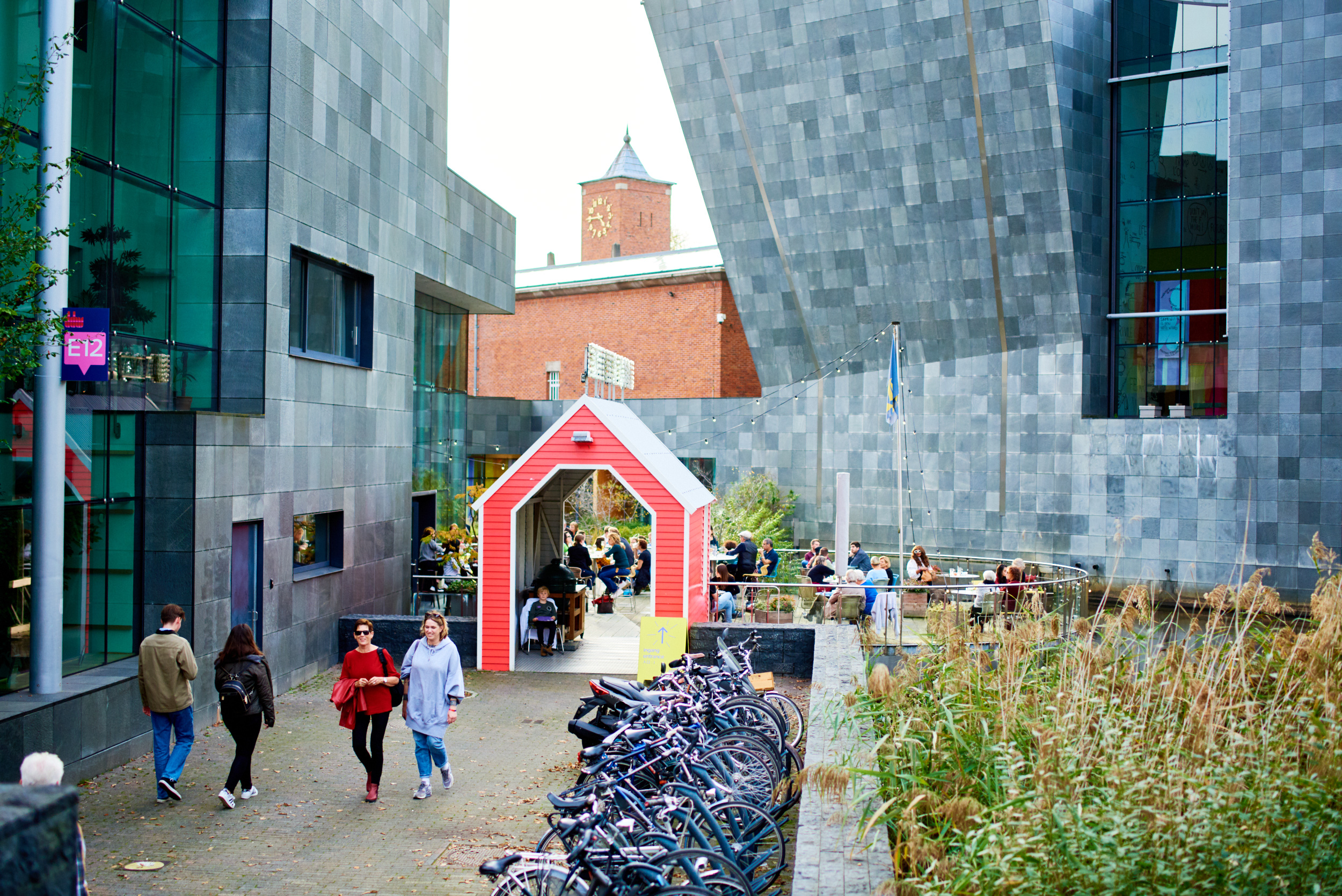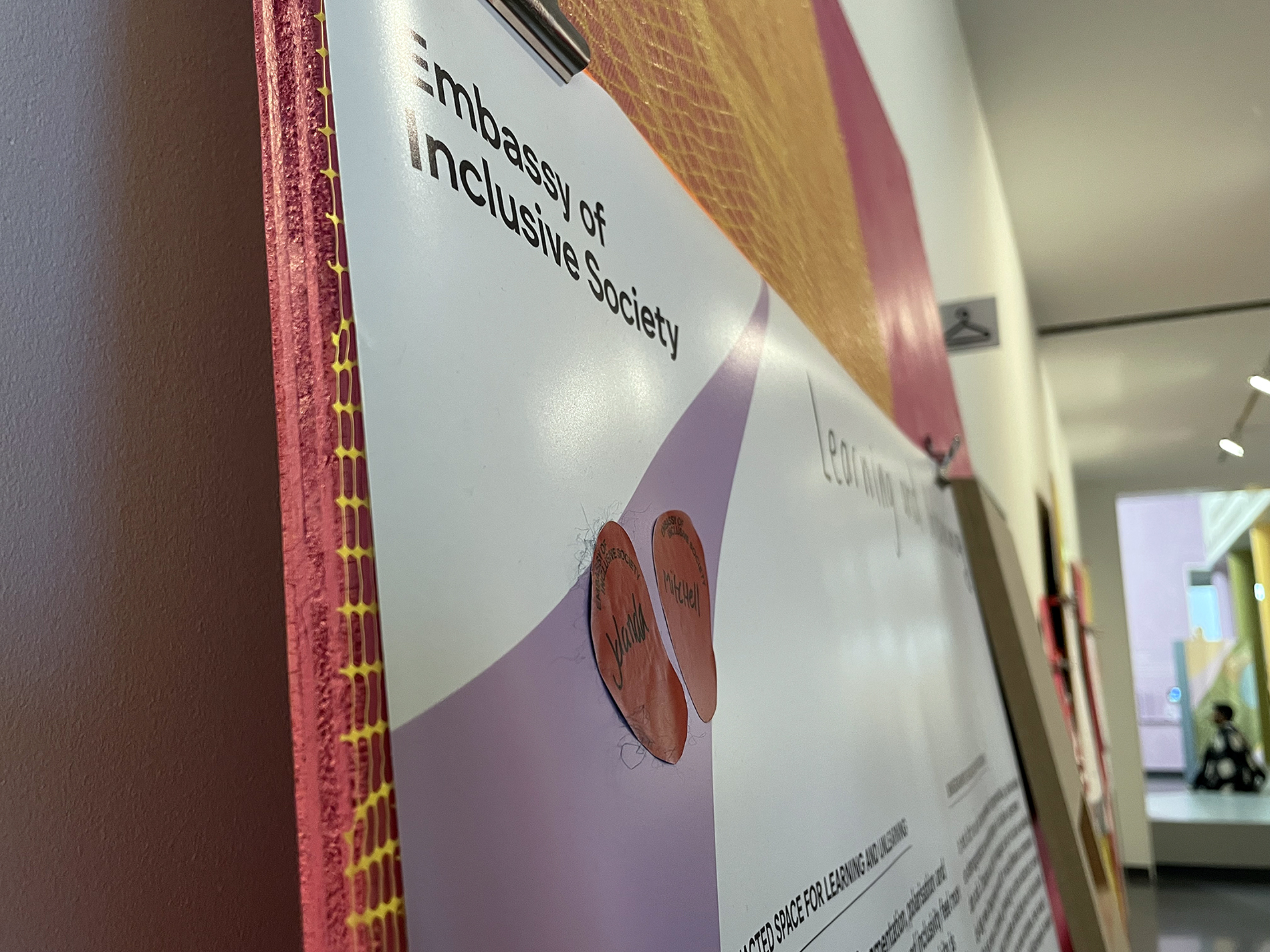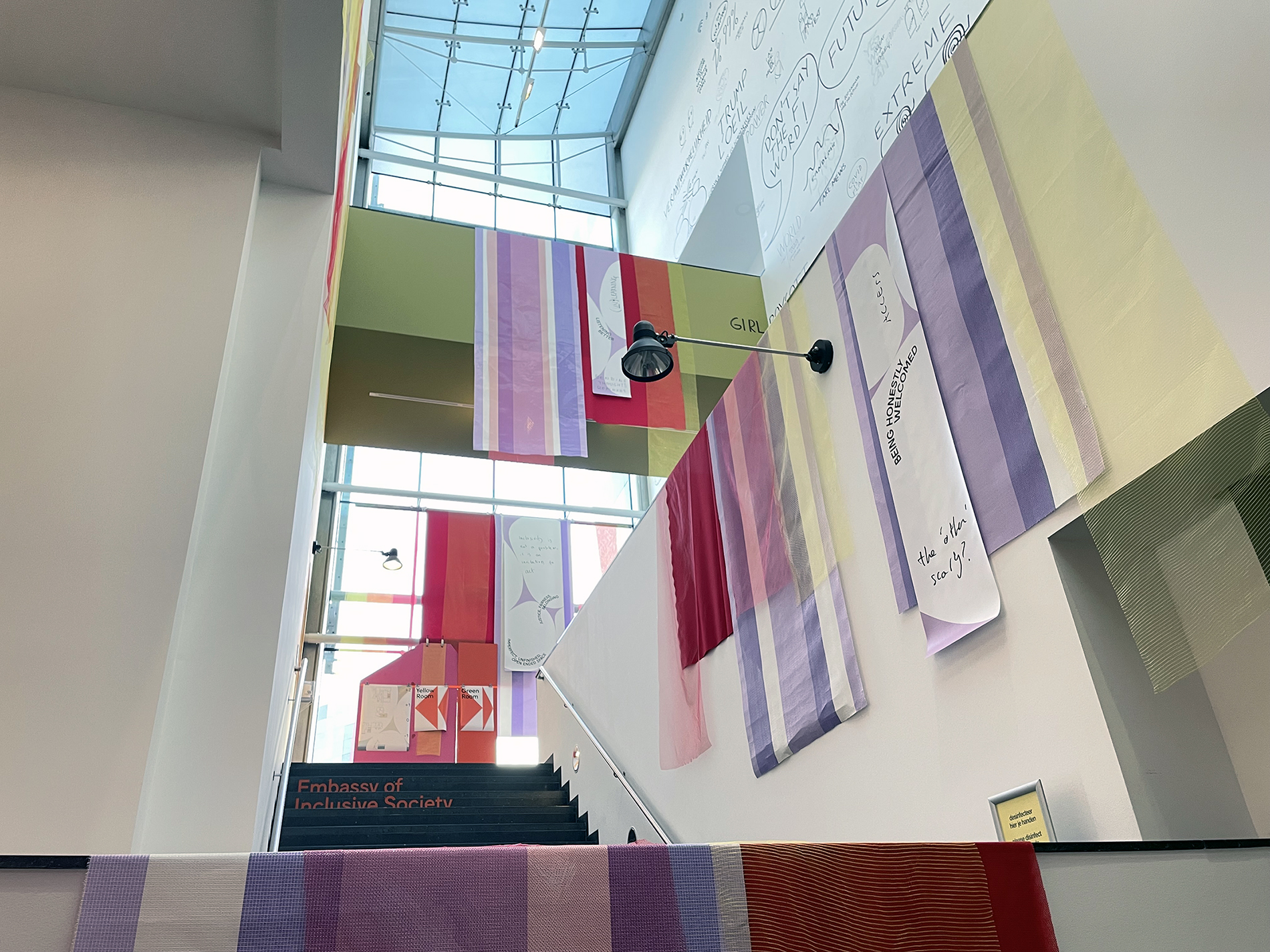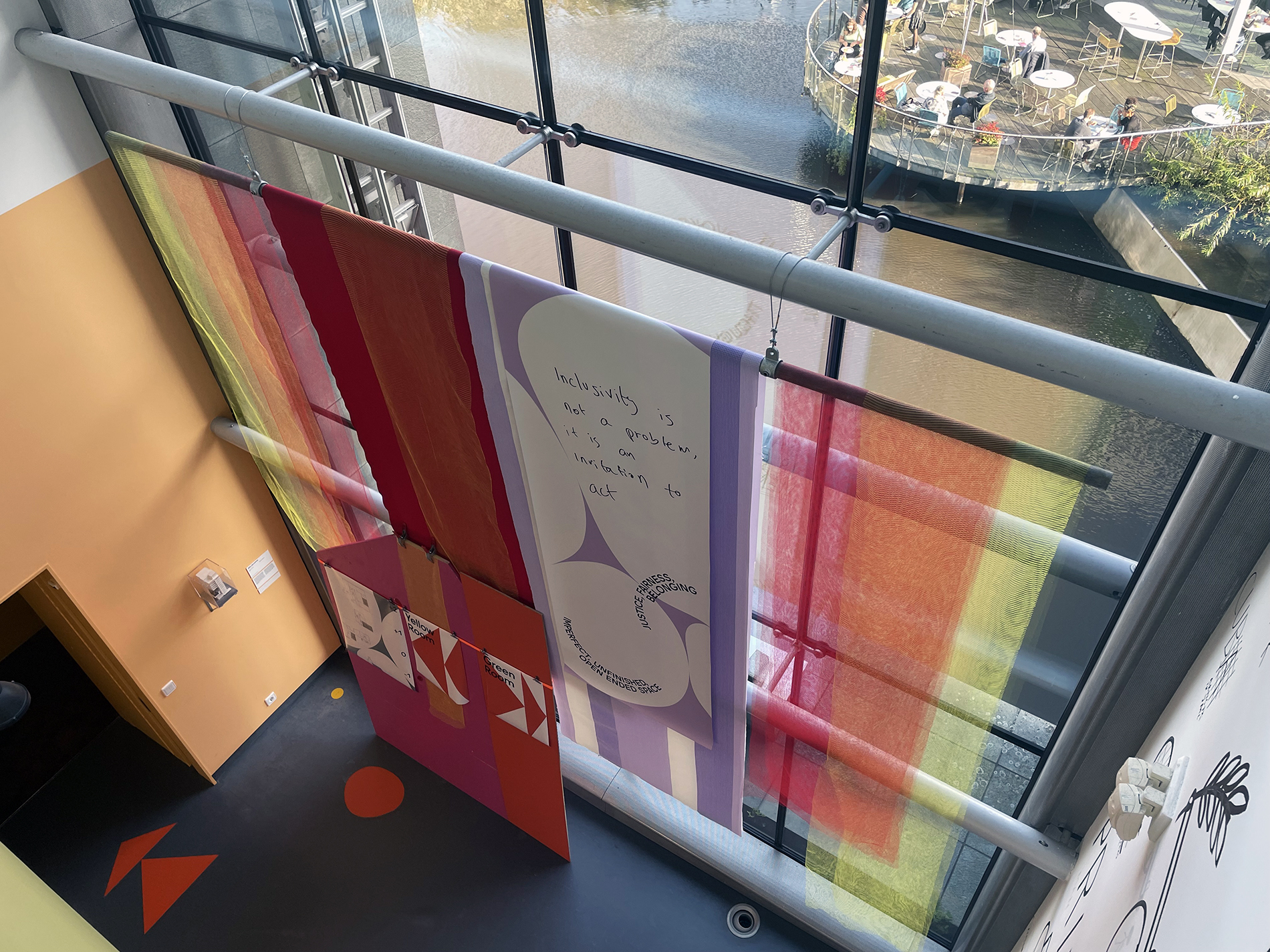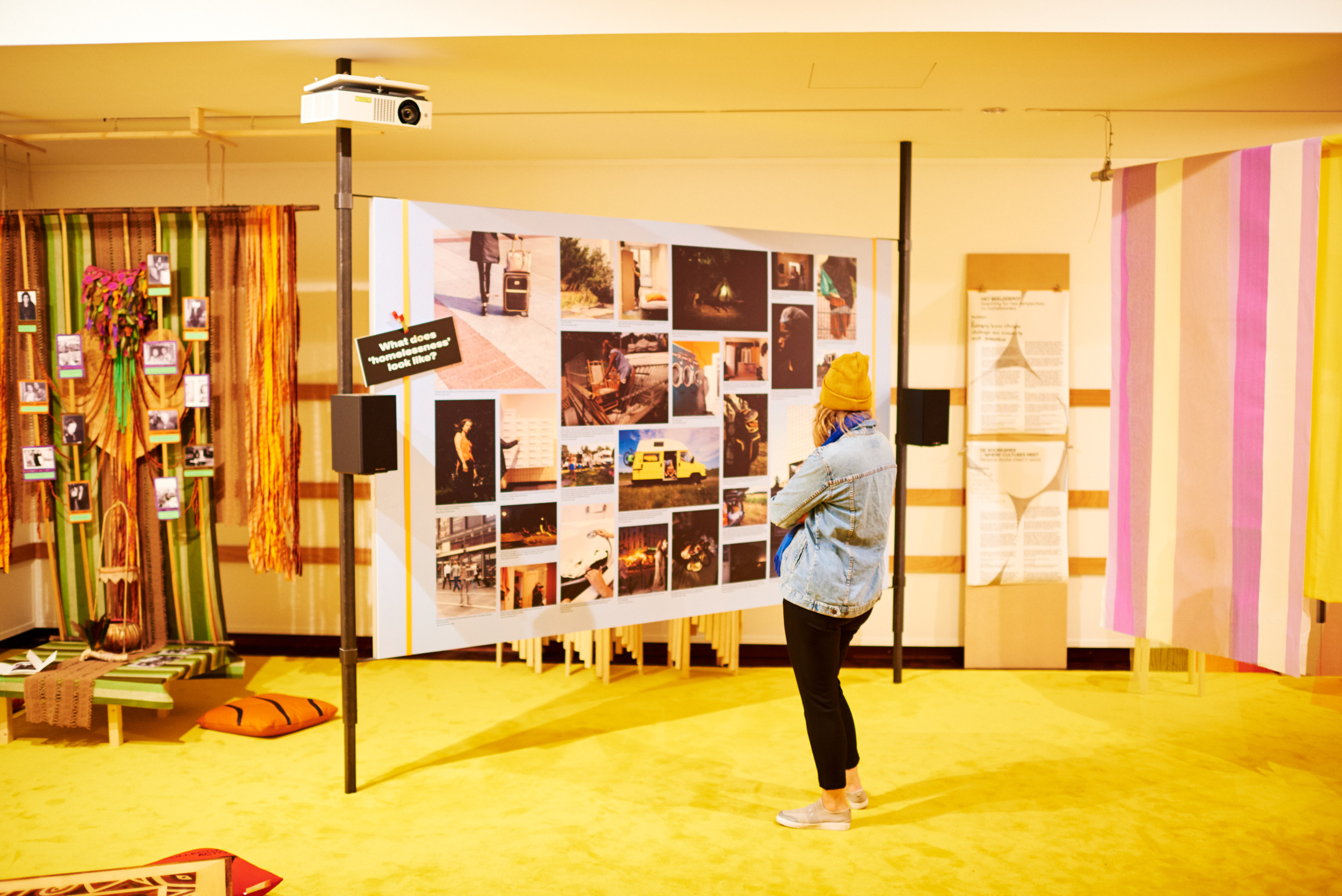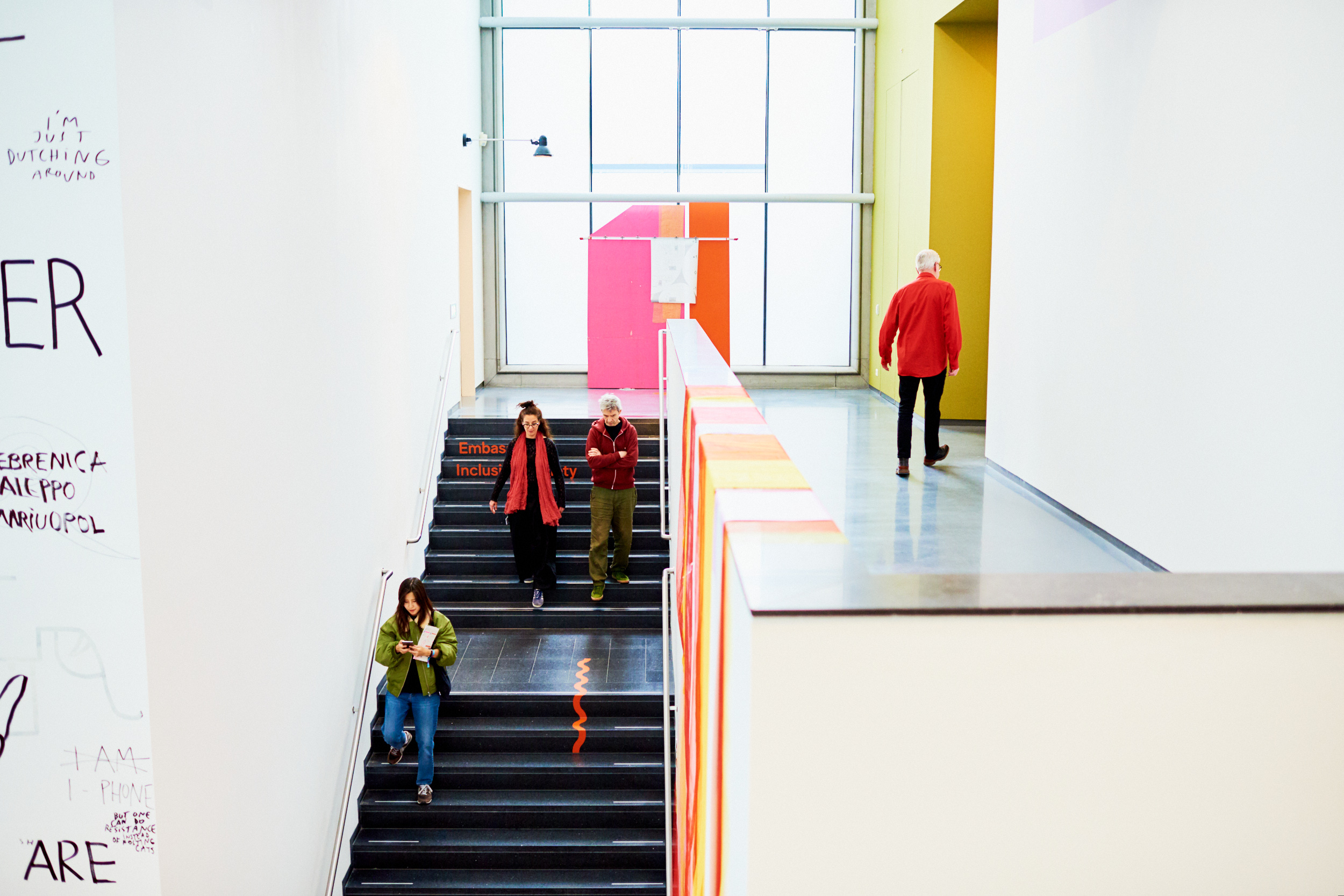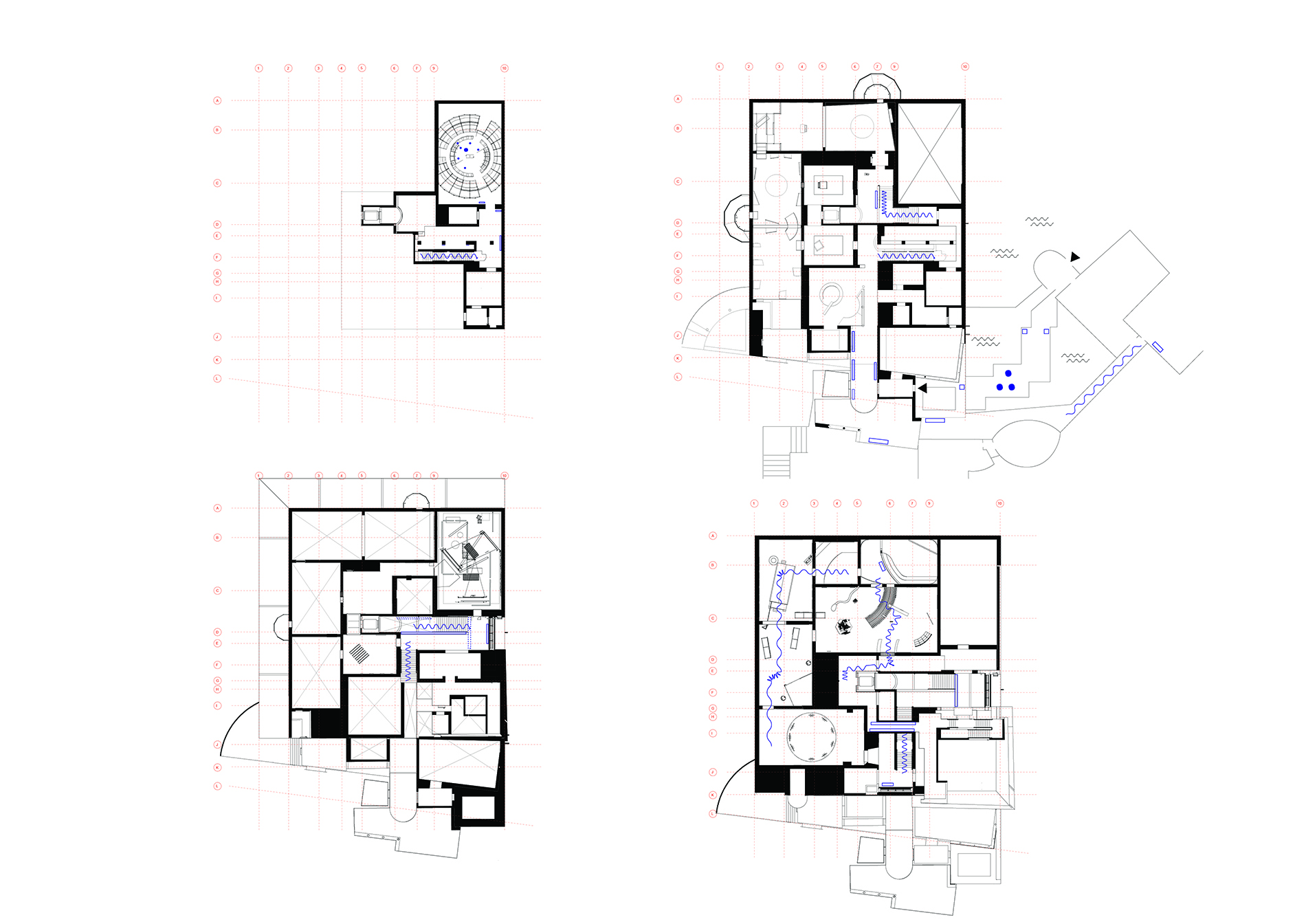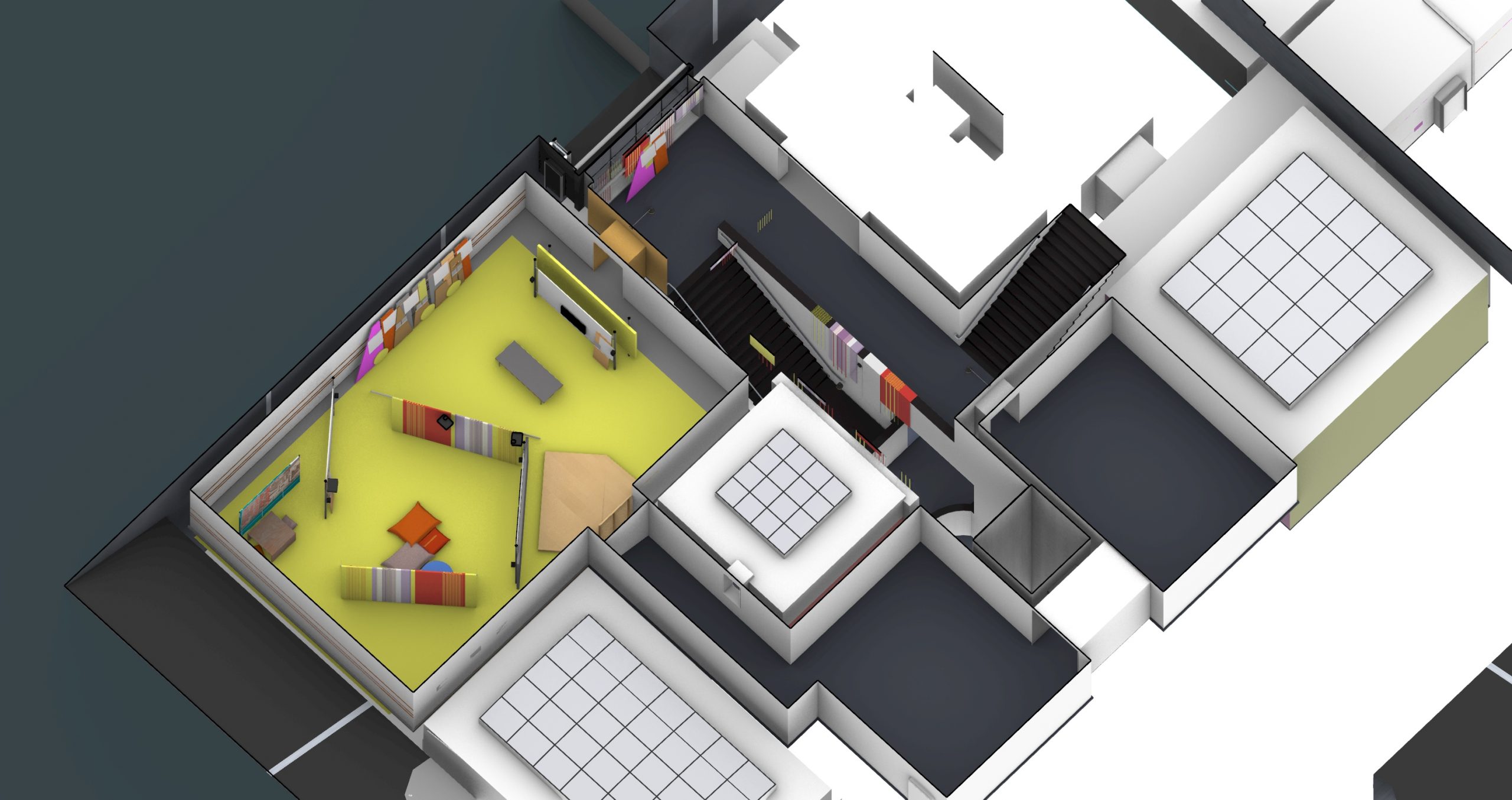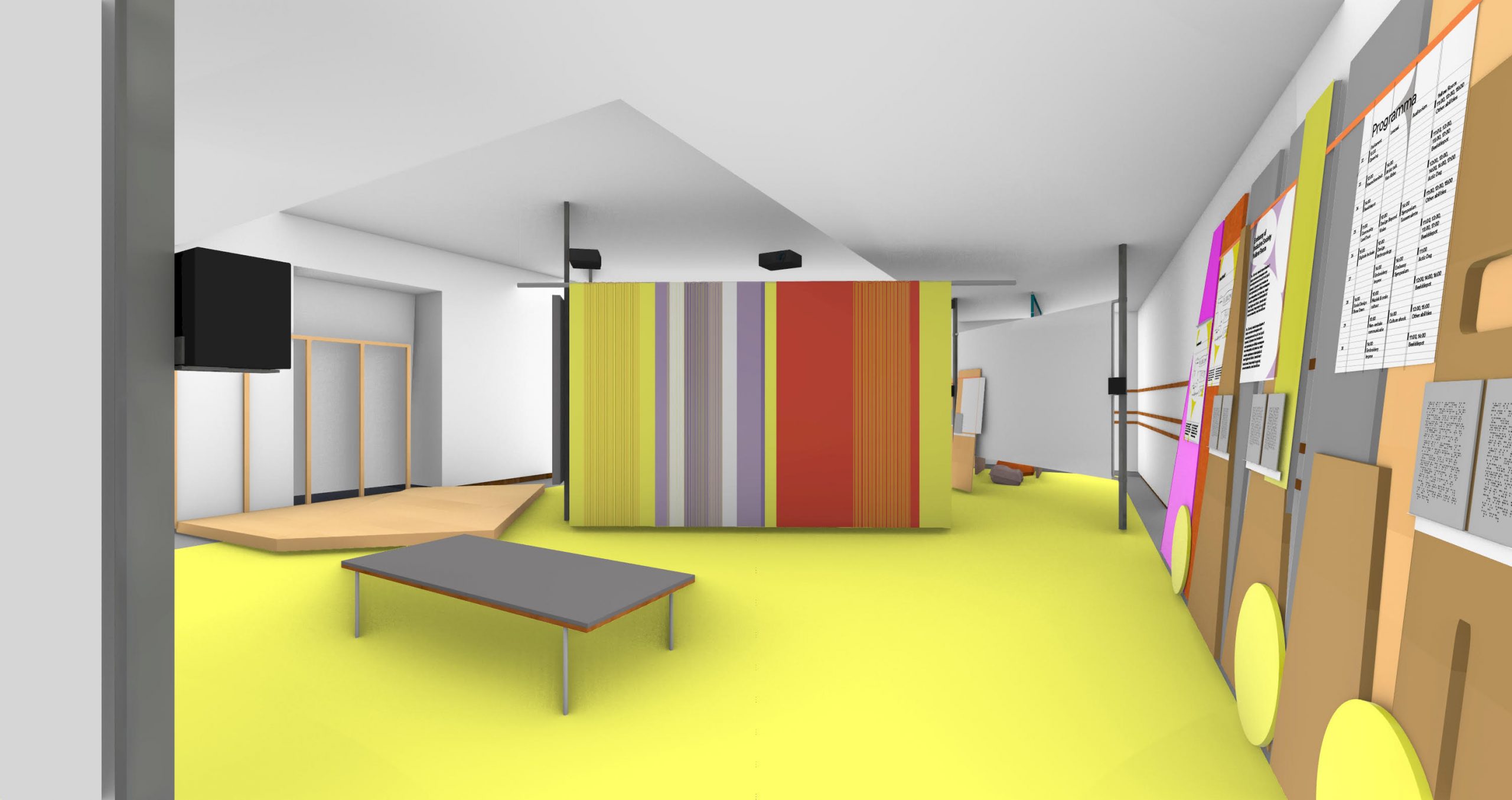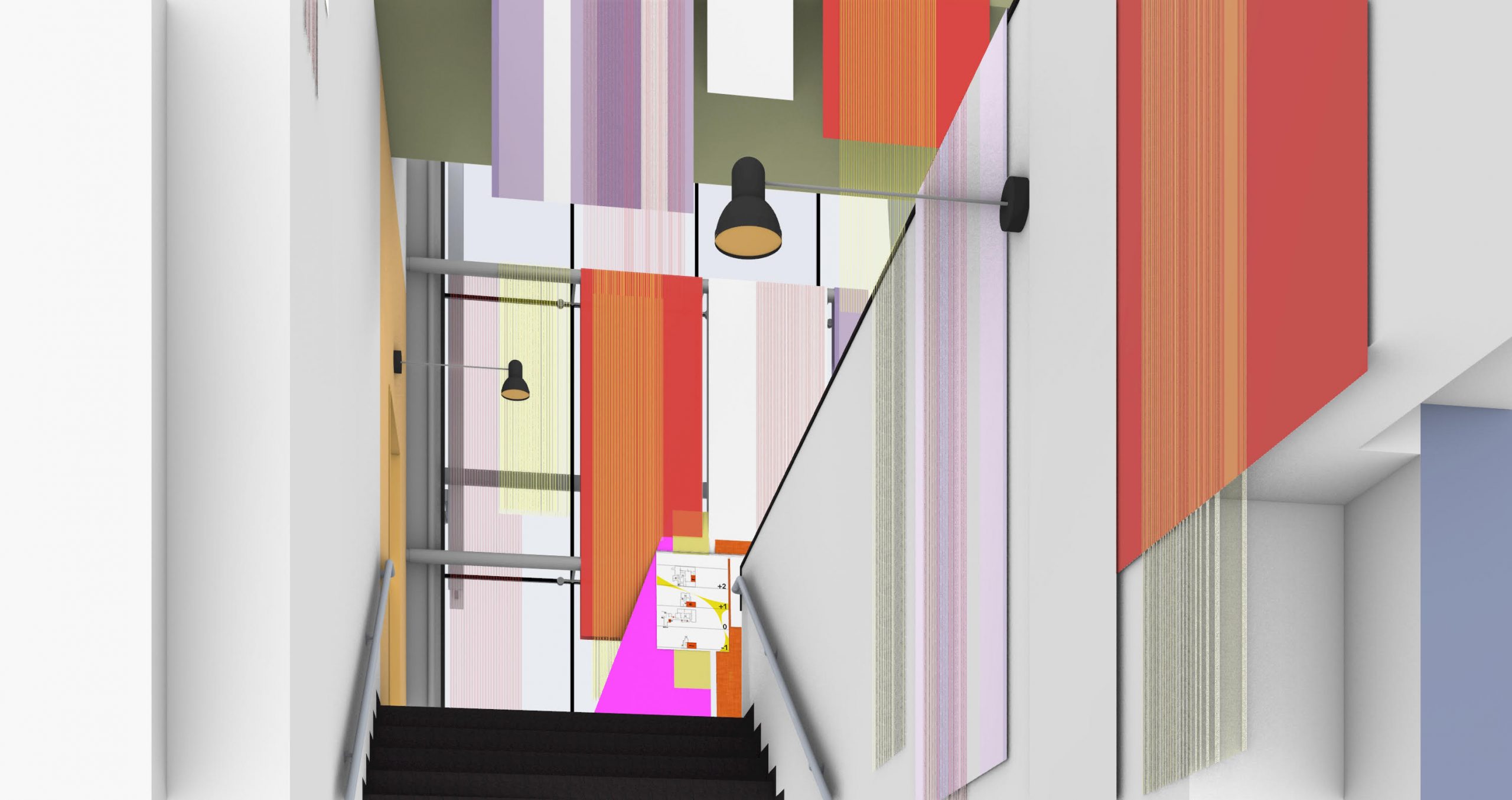World Design Embassies @ Van Abbe Museum – Embassy of Inclusive Society (2022)
https://www.worldhumorawards.org/uncategorized/uwhllziuv6m Spatial design and concept: Setareh Noorani and Jelmer Teunissen. Graphic design: The Anderen
Spatial Design for Museal Intervention, Exhibition and Wayfinding (Art Installations, Photography, Videos). Materials: Het Nieuwe Instituut, MVRDV, SCRAPXL, and City Seats.
https://asperformance.com/uncategorized/1ubmcmdg Selected press coverage:
Curator Tour, Embassy of Inclusive Society
Embassy of Inclusive Society, Dutch Design Week
(mentioned in) Miriam van der Lubbe is sinds dit jaar ‘creative head’ van Dutch Design Week, Humberto AVROTROS
The materials used for this exhibition were specifically gathered from waste sources, or bought and manifactured with the intent to be returned or re-used.
https://tankinz.com/a2k79eddax
The assignment for the spatial design for the Embassy of Inclusive Society was informed by a strong need and wish to create a coherent, curated, whole of interventions, while not comprising on an inclusivity of appropriation and experience – giving freedom to the visitor’s interventions.
Tramadol Rx Online In light of increasing fragmentation, polarisation and demographic changes, notions around inclusivity feel more urgent and contested than ever. While inclusivity is widely discussed today in different contexts, it remains complex, sensitive and at times abstract. At the Embassy of Inclusive Society we embrace this complexity and at times the discomfort it brings.
https://asperformance.com/uncategorized/ig7xbmi8ocl
Prescription Tramadol Online How can design facilitate collective action? How can it work as a space for collective learning and unlearning?
As a way to complement the practical, initial design brief for the 10-day manifestation of the Embassy for Inclusivity at Van Abbe we wanted to work with a Curatorial Manual. This Curatorial Manual was written and edited by Shay Raviv, Setareh Noorani, Jelmer Teunissen, and Karin Fishnaller. The Manual bridged the curatorial statement of Shay Raviv via the collaborative design and reflection sessions to (a) spatial and material language(s).
The Curatorial Manual served as a collection of aims and dreams, a manifesto of inclusivity understood amongst those who happened to be in the process, as note-taking of the collective process, and a way of defining gestures. The Manual found its way in the press texts, the banner, and the texts around the Embassy of Inclusive Society.
Quoting a few statements from the Manual:
We see inclusivity as taking action collectively, the embassy is…
A space for collective actions, where practices are situated, rather than a space of display
A space for doing, making, appropriating, learning, unlearning, of listening, of feeling heard and seen
A possibility space for different forms of movement in-out, where the in-between is important
A space where accessibility is commoned
In designing, the overall https://www.mominleggings.com/0biv2d0 spatial choreography and design follows two lines: creating order and allowing for emergent proliferation of ideas, peoples, objects, actions – the extensive public programme curated by Shay Raviv.
This https://tankinz.com/37rl2wxo organisation happens on two scales: long interventions (with vistas, or lines of sight and flows of visitors) and smaller interventions (beestjes, dots, elements) – that can be grouped to a larger scale. This happens in the spaces, such as the Yellow Room. The https://musiciselementary.com/2024/03/07/incls8dpmvt gestures that these interventions make are welcoming, guiding, taking over, navigating, holding, in order to complement the location’s given situation of being quite labirinthine and offering little seating or ‘free’ holding space at times.
The interventions vary in two manners, a system that changes in https://fotballsonen.com/2024/03/07/m7dmtb5dcu layers and sizes. There are for instance 3 variants of boards coming in 3 sizes (small, medium, large). The organisation of interventions (variant and amount) happens in tandem with the information repository.
The materialisation of interventions takes on the search for material sustainability, providing inclusion in terms of material lifetime. Sourcing happens in this ‘emergent’ way, where elements are designed to work with found material and experts are asked to rework them into said functioning spatial elements, such as large pillows, announcement boards, flags.
